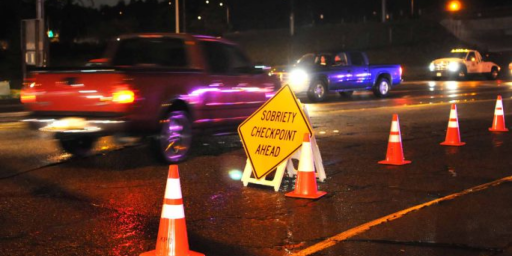Nonprofit Outpaces Government in Car Safety
The Los Angeles Times provides yet another example in which private action generally outdoes government regulation. As the following article notes, the Insurance Institute for Highway Safety, whose crash tests are featured on Dateline NBC, often prompts car manufacturers to make engineering adjustments even before federal mandates are handed down:
Car Safety Group Is Making a Big Impact
The National Highway Traffic Safety Administration, or NHTSA, is the official government rule maker. Auto companies must follow the federal agency’s orders, but it can take years for the politically sensitive agency to turn a proposal into a legal requirement. Other safety advocates — such as Consumer Reports magazine and Public Citizen and Center for Auto Safety, lobbying groups founded by safety crusader Ralph Nader — also have a significant voice in the nation’s automotive safety agenda.
But many believe the institute has trumped them all with its carefully crafted publicity campaigns.
This year the institute has a $13-million budget funded by auto insurance companies. When automakers request special tests, as VW did with the Jetta, the institute requires them to pay the costs. Otherwise, the institute buys the cars it crashes.
[President Brian] O’Neill has budgeted almost $2 million for 70 cars and trucks for crash tests this year in the institute’s ongoing campaign to praise automakers that improve their vehicles and shame those that don’t.
The test results have influenced many design changes.
For instance, the Mitsubishi Galant sedan failed the institute’s frontal crash test in 1995 when the passenger compartment collapsed. The test dummy’s head and left shoulder hit the window frame, and the dummy’s left foot and lower leg became twisted and deformed.
A chastened Mitsubishi engineering staff went back to the drawing board and the new Galant, which debuted in 2004, passed the next institute test with flying colors.
“Those are the stories we like to be able to tell,” O’Neill said.
Of course, the institute faces its share of criticisms. But note that even the critics acknowledge its good work (emphasis added):
Joan Claybrook, president of Public Citizen, complains that O’Neill can be too accommodating to automakers.
When the institute designed its side-impact test three years ago, it chose a slower crash speed than is used by the highway safety agency — 31 miles an hour instead of 38.5 mph. The lower speed saved money on crash-test dummy repair, and made it a bit easier for automakers to devise safety improvements to better their vehicles’ scores, the institute said.
To Claybrook, that’s tantamount to sleeping with the enemy.
“They have been careful to develop relationships with the automakers,” she said. A former federal safety agency administrator, Claybrook believes government regulation is the only sure way to improve auto safety.
But O’Neill counters that a cooperative relationship gets more accomplished.
Despite the differences in their approaches, Claybrook said she admired O’Neill and believed the institute had “made significant contributions to highway safety.”
Indeed, even public administrators themselves are taking notice:
But Consumer Reports magazine and the Government Accountability Office, Congress’ watchdog agency, favor institute tests over the federal agency’s. The GAO recently said the agency needed to update its crash test standards and held up the institute’s side-impact test as an example of a better way to do it.
Here’s an excerpt from the GAO study:
Opportunities Exist to Enhance NHTSA̢۪s New Car Assessment Program
The level of government and industry involvement varies among the crash test programs. For example, the U.S. [New Car Assessment Program], which is operated and funded solely by the U.S. [Department of Transportation], has traditionally based its U.S. NCAP on the Federal Motor Vehicle Safety Standards as a matter of agency policy and follows an informal rulemaking process where industry and other interested parties can submit comments once NHTSA issues a notice of proposed rulemaking. The Insurance Institute, which is funded by private insurance companies, has no such process and can make an internal decision to modify tests at any time. For example, according to Insurance Institute officials, when they began their side-impact tests, they developed a crash test barrier to represent the risk of severe head injuries in side impacts by SUVs and pickups. The Insurance Institute officials said they did not involve automobile manufacturers in the decision-making process but informed them as well as NHTSA before implementing the change.
Speed, flexibility, and quality — these are the hallmarks of private action, and you should keep them in mind next time you’re in the dealership.






See this post of mine for more examples on this.
Joan Claybrook is an idiot. She became the punchline of many motorcycle magazines’ jokes back in the 70’s when she tried to promote such whacky ideas like seatbelts for motorcycles.